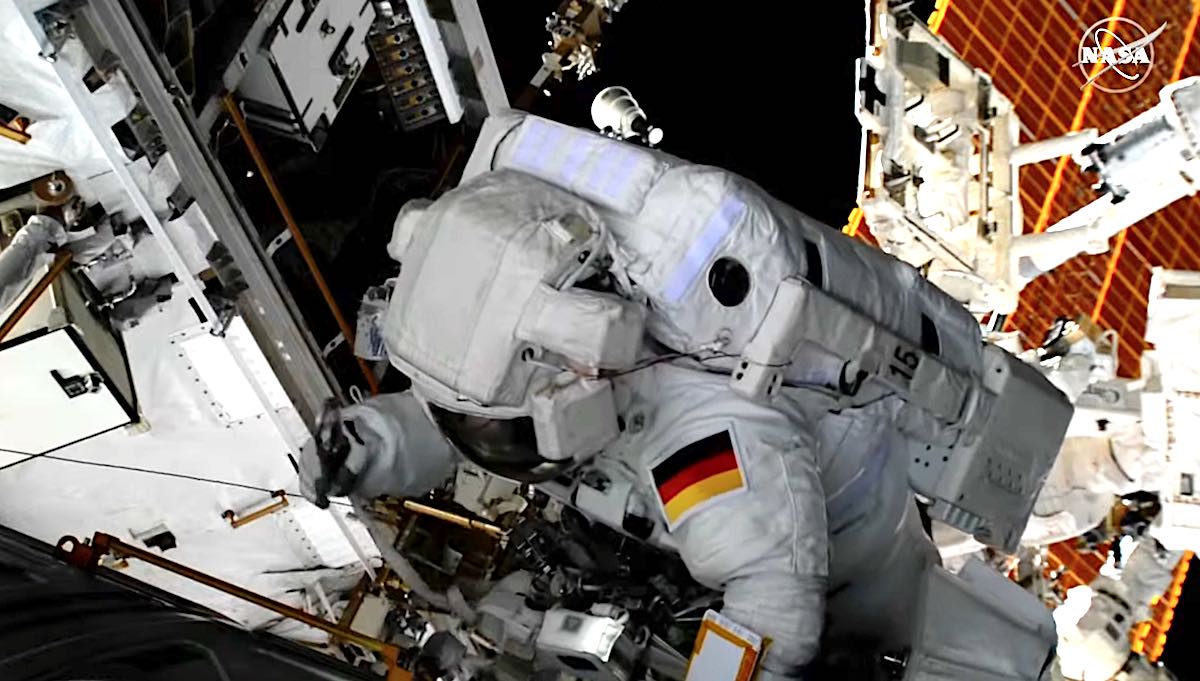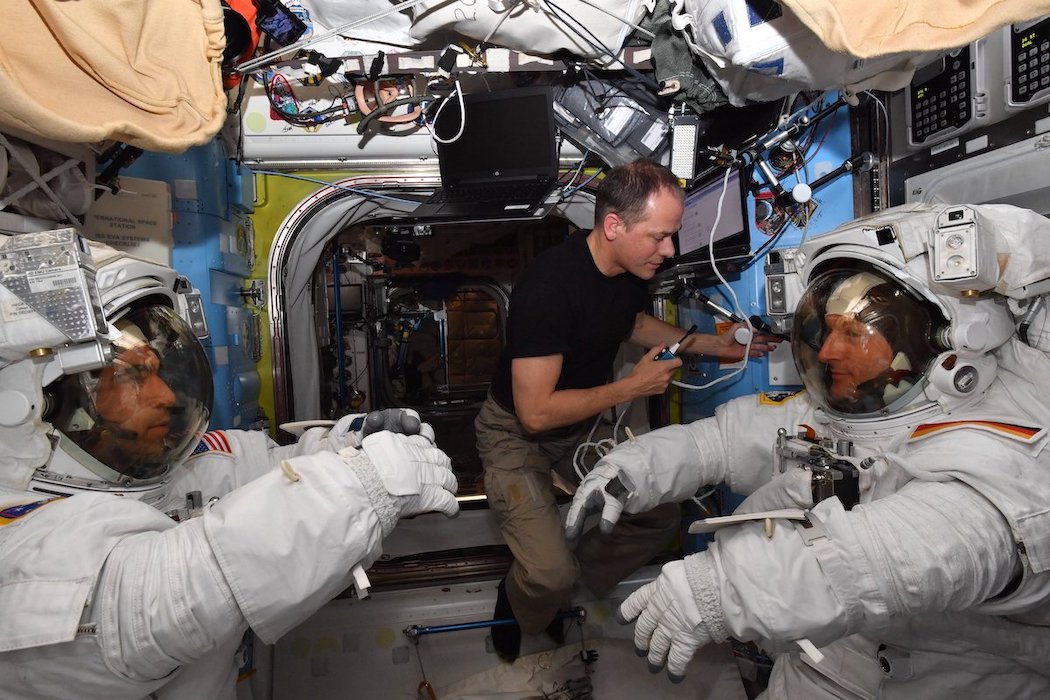EDITOR’S NOTE: Updated at 5:30 p.m. EDT (2130 GMT) after end of spacewalk.
STORY WRITTEN FOR CBS NEWS & USED WITH PERMISSION

Two astronauts floated outside the International Space Station Wednesday and installed refurbished ammonia jumpers in the lab’s cooling system to bring it back up to full efficiency, replaced a high-definition camera and made power and data connections on a European experiment platform.
When the six-hour 54-minute excursion ended, astronaut Kayla Barron, helping German astronaut Matthias Maurer out of his spacesuit, reported water inside his helmet, bringing to mind a life-threatening malfunction during a 2013 spacewalk that flooded Italian astronaut Luca Parmitano’s helmet.
“I want to report Matthias had some water in his helmet,” Barron radioed mission control. “It’s a little bit difficult to judge the volume because it’s spread across the front of his visor, but I think we should accelerate the steps to get him out of his suit here.”
Once the helmet was off, the crew estimated up to 50 percent of the visor was coated with a thin film of water and that an absorption pad added to NASA helmets in the wake of the Parmitano incident was damp.
NASA mission control commentator Chelsey Ballarte said Maurer was never in any danger. While he did not report any concerns during the spacewalk, any excess water in a space helmet is a cause of concern and Ballarte said “the crew is going to continue to take documentation of the water for analysis by the ground team.”
Floating in the Quest airlock, Maurer and NASA astronaut Raja Chari switched their spacesuits to battery power at 8:32 a.m. EDT to officially kick off the 248th spacewalk in ISS history, the third so far this year, the second for Chari and the first for Maurer.
The crew lost about an hour shortly after floating out of the airlock when Maurer’s helmet camera assembly came loose. Chari ended up securing it with wire ties, but the lost time forced them to forego lower-priority tasks that had been planned toward the end of the excursion.
Anchored to the end of the space station’s robot arm, Chari installed the ammonia jumpers and worked with Maurer to attach and connect the TV camera. Work to attach two handling fixtures to an external radiator assembly was deferred to a future EVA.
“We’re excited that Raja is having a chance to fly the smooth and friendly skies of Kayla and Tom,” radioed astronaut Stephanie Wilson from mission control, referring to robot arm operators Thomas Marshburn and Barron.
“Absolutely,” Chari replied as the arm slowly moved him to the coolant system work site. “Way better than business class.”
NASA astronaut Raja Chari is “flying the friendly skies” outside the International Space Station, riding the lab’s robot arm to a work site to install ammonia jumpers on the station’s cooling system.
“Way better than business class,” Chari joked.
Watch: https://t.co/YKuO3KczK2 pic.twitter.com/TRoiWSXcyR
— Spaceflight Now (@SpaceflightNow) March 23, 2022
Maurer, meanwhile, floated from work site to work site, making power and data connections on the European Bartolomeo instrument platform, tying down a pulled-up insulation blanket on the Japanese Kibo module and helping Chari connect the new TV camera and wireless network access point. As with Chari, a few of his lower-priority tasks were deferred.
The spacewalk ended at 3:26 p.m. for a duration of six hours and 54 minutes.
“Gentlemen, you literally have been flown … all over station today and worked with many systems,” Wilson radioed. “Definitely teamwork has been the theme for the day, and we admire your tenacity.”
“It’s been a pleasure to work with you through training and then today through the EVA,” Chari said. “It was awesome working with you guys, thanks for keeping us going despite some things to work through. Appreciate it.”
The space station circulates ammonia through heat exchangers out to six radiators, three on each side of the lab’s power truss, to dissipate the heat generated by the station’s electronics. Each panel features two independent coolant loops, controlled by “radiator beam valve modules.”
In 2017, a slight leak was detected in jumpers running between one port-side radiator panel and a valve module. The coolant loop was closed to stop the leak and the lines were vented. The suspect hoses then were removed during a 2018 spacewalk, flown back to Earth, repaired and relaunched in 2019.

With Chari’s successful reinstallation, flight controllers will be able to re-fill the dormant coolant loop and bring the station’s thermal control system back to its full cooling capability.
Maurer’s apparent helmet leak was not noticed until the airlock was repressurized at the end of the spacewalk.
“The HAP (helmet absorption pad) is a little bit moist, but I think it would have been difficult to detect through a comm cap,” Barron reported. “Let us talk about how much water we think it is. … Roughly, maybe an eight- to 10-inch diameter circle, a thin film of water on the helmet. And there is water in his vent port at the back of his neck ring.”
Marshburn estimated 30 percent to 50 percent of the visor’s coated with a layer of water, but it was much less than the amount that flooded Parmitano’s helmet in 2013 as he made an emergency return to the airlock. That incident later was blamed on a clogged filter in the suit’s cooling system.
Engineers will carry out a detailed assessment to determine the source of the water in Maurer’s helmet and any corrective action that might be needed.
